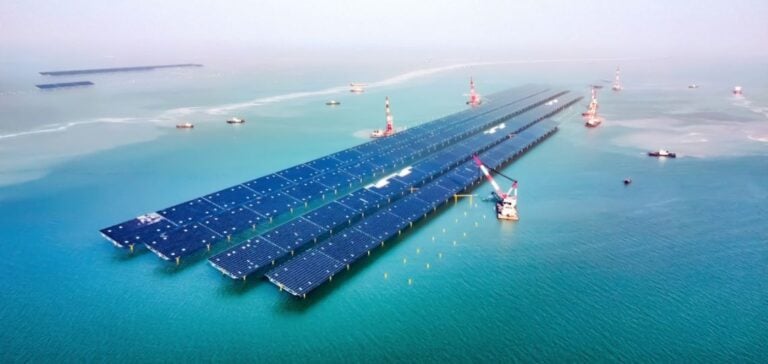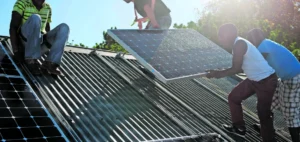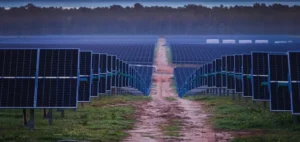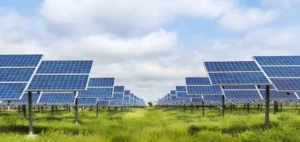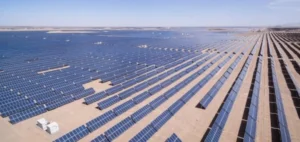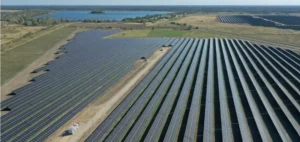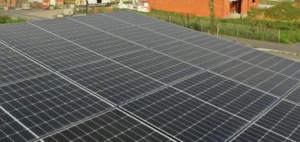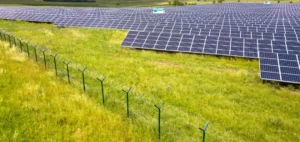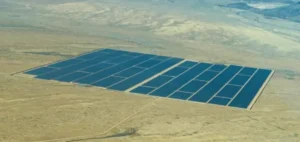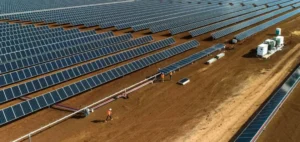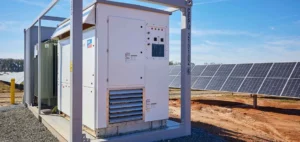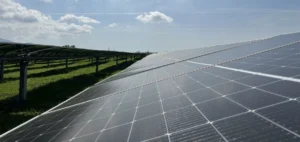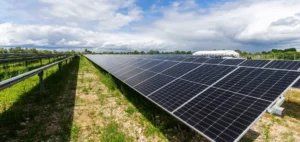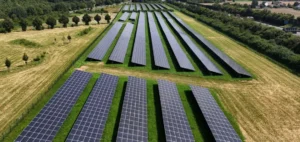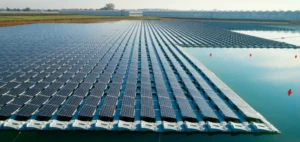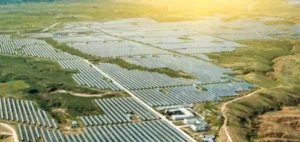The integration of renewable energy in complex environments represents a major challenge for the global energy transition. The Mengxi Blue Ocean Photovoltaic Power Station, located in a mining subsidence area in Ordos, China, is a landmark example of this progress. Now the world’s largest photovoltaic plant built on mining land, this site uses Arctech’s SkyWings solar tracking system to transform degraded land into a vector of sustainability and technological innovation.
Arctech’s SkyWings system relies on a single-axis, dual-row solar tracking structure. It enhances the average annual grid-connected capacity by 7.41% thanks to multipoint synchronization and a torsion tube designed to withstand strong winds of up to 18 m/s. This robustness ensures uninterrupted electricity production under extreme weather conditions.
Optimization through AI and mechanical innovations
SkyWings integrates a second-generation artificial intelligence (AI) algorithm to optimize the tilt of solar panels based on the specifics of each terrain. This enables real-time shading avoidance, boosting energy generation by up to 8%. This flexibility extends to irregular terrains through topographic adaptation capabilities, tolerating slopes of up to 20% in east-west directions and 15% in north-south directions.
The design also includes elevated posts maximizing the space beneath the panels for agrivoltaic practices, harmoniously combining energy production with agricultural activities like farming and livestock raising. This dual land use generates both ecological and economic benefits for local communities.
Eco-friendly and recyclable construction
To reduce the environmental impact of construction, Arctech opted for H-shaped steel piles, assembled using on-site static pressure techniques, thus avoiding the nuisances of traditional methods. This approach reduces waste by 60% compared to concrete piles and ensures 90% of the materials can be reused after 25 years of operation.
In terms of energy output, the plant will produce 5.7 billion kilowatt-hours annually, meeting the needs of two million households while cutting standard coal consumption by 1.71 million tons. This results in an annual reduction of 4.7 million tons of carbon dioxide emissions, equivalent to planting 62,700 hectares of forest.
A model for the future of the energy transition
By demonstrating how degraded areas can be transformed into sustainable energy infrastructure, the Mengxi Blue Ocean Photovoltaic Power Station exemplifies the multiple benefits of smart planning and advanced technological solutions. Arctech, with its SkyWings system, proves that innovation, sustainability, and community benefits can coexist on a large scale.

